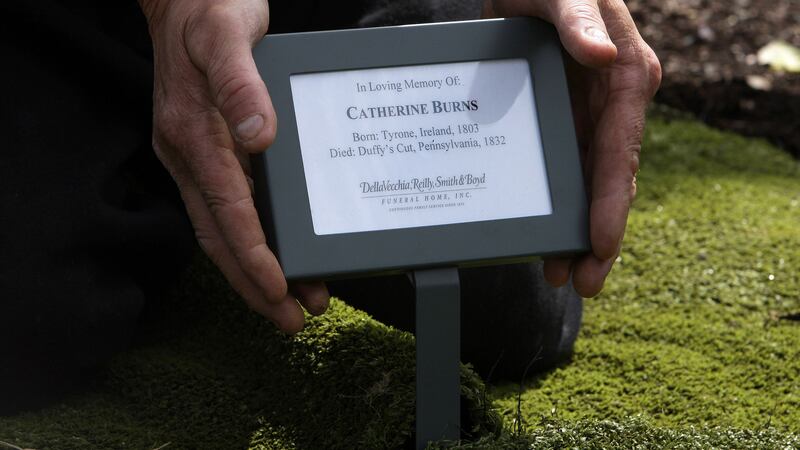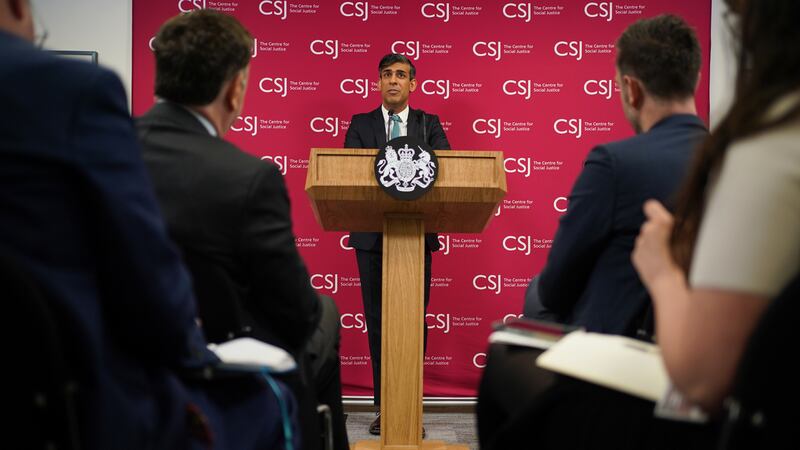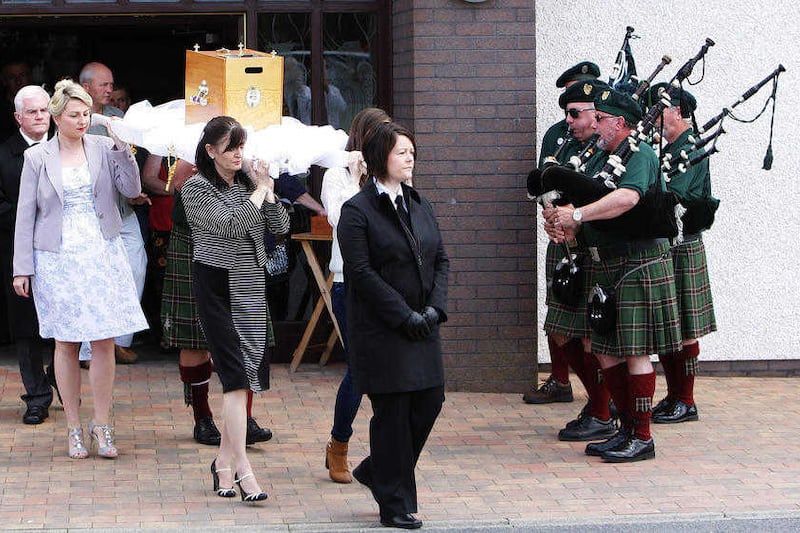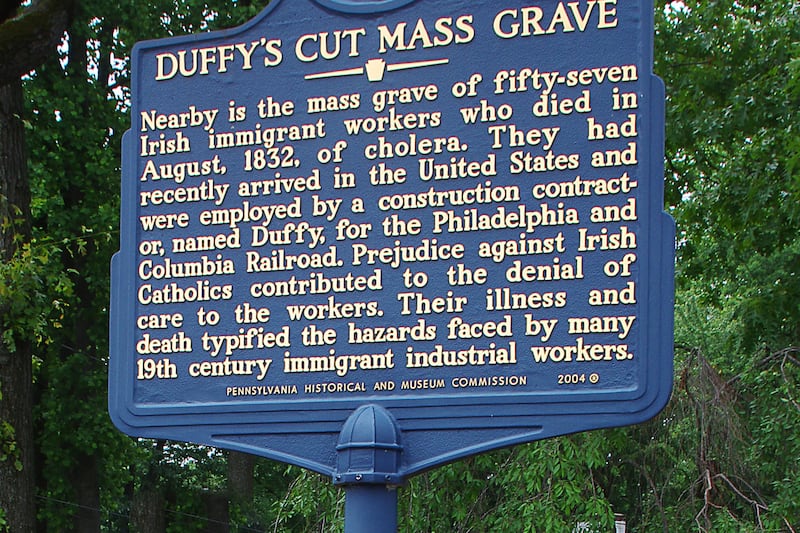The remains of a woman murdered in America 183 years ago have been buried in her native county in a "miraculous" homecoming.
Catherine Burns, 29, left County Tyrone in 1832 in hope of catching "the tail of the American dream", but within six weeks she was dead and lay in an unmarked grave in the US for almost two centuries.
Around 400 people turned out for the funeral mass and burial of the tragic widow at Clonoe Chapel near Coalisland.
Ms Burns was among a group of 57 Irish immigrants from Donegal, Tyrone and Derry, who sailed across the Atlantic on the John Stamp ship from Derry to Philadelphia, and were hired to build a railway between Philadelphia and Columbia, on a site that became known as Duffy's Cut.
Within six weeks, all were dead of cholera and possibly violence, and were buried anonymously in a ditch.
All that is known about Ms Burns prior to her violent death is based on an entry on the ship's log which states her age, the county she is from, her marital status, and the fact she had no luggage.
The case has been researched at Immaculata University in Pennsylvania by the Duffy's Cut Project, an ongoing archival and archaeological search into their lives and deaths.
Among mourners at the funeral was Dr William Watson, professor of history at Immaculata University and senior member of the Duffy's Cut Project.
Dr Watson excavated Ms Burns's remains in July 2010, and he brought her back home to County Tyrone this week.
Speaking after he and his colleagues played the pipes at the graveside, he said: "It's miraculous. This whole thing's miraculous. I was sitting in the church and it was kind of like an outer body experience.
"I couldn't believe it was happening. The choir, the sermon, the trappings of the mass, the whole community out. It's just overwhelming."
He added: "I think an important chapter in all our lives has come to a conclusion."
Dr Watson hailed the effort put in by Clonoe Parish and the crowd of people who turned out for the funeral.
"This is incredible. It's a lot of people, and good people," he said.
It is not known exactly where in County Tyrone Ms Burns was from, but Clonoe parish priest Father Benny Fee said "all of Tyrone belongs to Catherine Burns".
Her remains were carried into the chapel by three women from the parish who are also called Catherine, along with a researcher from the Duffy's Cut Project.
During his sermon, Father Fee said it was an "awesome privilege" for the people of Tyrone to welcome Ms Burns home.
Referring to how little is known about Ms Burns, he said: "What we do know is that she knew suffering.
"She was married and already widowed at the tender age of 29. Before she was 30 she had loved and she had lost.
"Today, Catherine belongs to all the widows of our land, those women who loved and lost, today also is their day."
Father Fee said Ms Burns set off for America because she had "no other choice", adding: "She could stay at home and starve or she could gamble on taking the ship across the broad Atlantic and with a bit of luck, catch the tail of the American dream."
At an Irish wake prior to the funeral, Dr Watson said: "I think it's amazing that Catherine Burns got something that she has not had for the past 180 years.
"For the sake of justice and righting a historical wrong this goes a long way. This is huge. From our perspective this is overwhelming actually."
He added: "We're researchers but we're also human beings. And it's just a very emotional thing."
Dr Watson said forensic teams were able to confirm that the remains belonged to a woman of about 30.
He said the skull of Ms Burns shows "massive peri-mortem violence by means of a sharp implement which would have caused her death".
He added: "We believe Catherine was murdered in an attempt to contain the cholera epidemic, which the locals believed was being spread by the immigrant railroad workers.
"The workers were a convenient scapegoat for the community, which did not understand the etiology of the disease."
Some people also believe anti-Irish or anti-immigrant feeling may have played a role in her murder.
In his sermon, Father Fee called for people to make migrant workers welcome. He referred to a recent news report which he said stated that hate crime incidents in Northern Ireland have risen by a third in the past year.
"What percentage of those incidents is related to migrants I do not know though I suspect and I fear the percentage is quite large.
"What a shame, what a disgrace, what a slur, what an indictment that is.
"How quickly our people have forgotten that they were once migrants themselves," he said.
Father Fee said that while cholera was a factor in the deaths of many of the 57, a strong anti-Irish feeling in the air did not help the case for "mercy".
Ms Burns's square box-shaped coffin was buried beneath the Tall Cross of Clonoe a few metres from the Parochial House where a Tyrone flag was flying next to an American flag.







